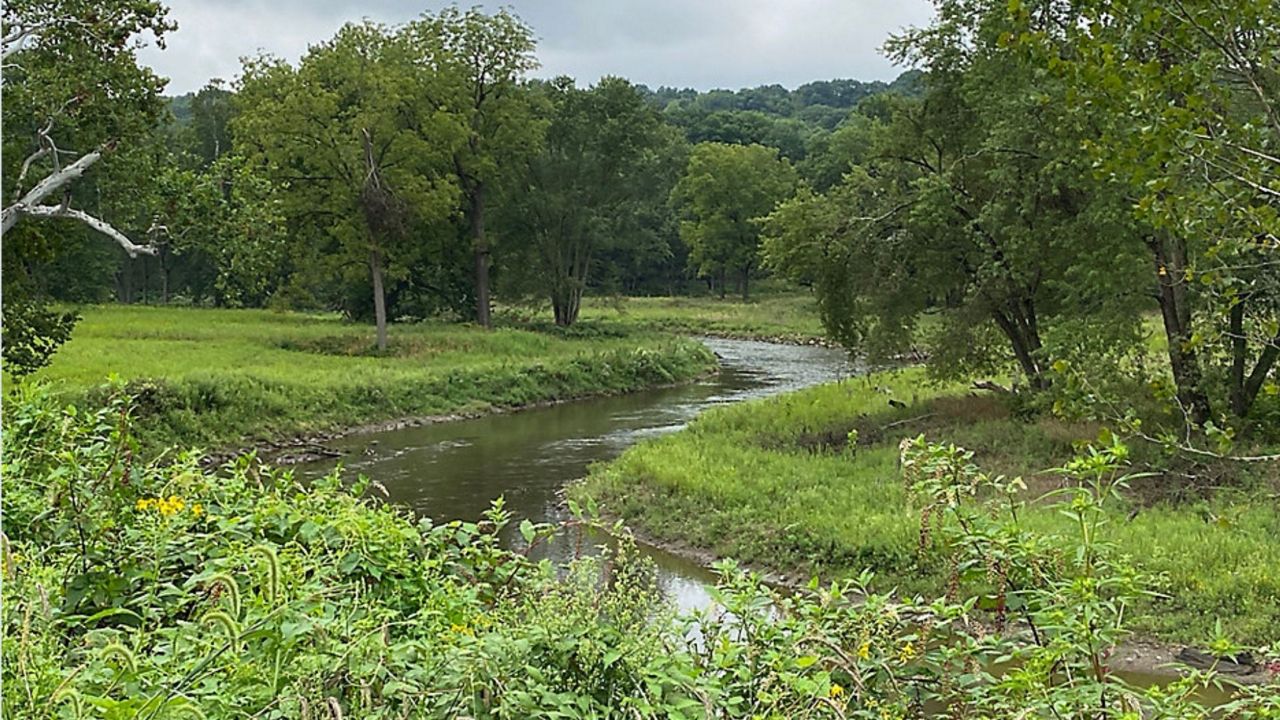The new 200-acre site is in the Valley View Area of Cascade Valley Metro Park just north of downtown. It links three Metro Parks, creating 1,800 acres of green space supporting local wildlife populations on land and in the Cuyahoga River, King said.
In honor of its 100th year in operation, Summit Metro Parks dubbed a temporary trail in the new park the “Celebration Trail,” said Executive Director Lisa King.
King also dedicated Drumm’s sculpture with an official proclamation presented to the artist during the par- opening ceremony.
The sculpture at the park entrance, featuring one of Drumm’s iconic sun designs, is made of steel and stands 19-feet high. Drumm said he designed it to be seen coming from either direction, and tall enough to be viewed from afar once the leaves have fallen.
Drumm has sculptures all over Akron and around the world. Locally, his work van be viewed at Cascade Plaza, the John S. and James L. Knight Center and other places people gather.
One of Drumm’s most notorious sculptures is "Solar Totem Number 1" at Kent State University, which features steel plates that rise to the sky and a single bullet hole from the gun of a National Guardsman on May 4, 1970.
For the new park, Summit Metro Parks was granted more than $6 million from local foundations, and state and local entities, King said. The total cost of the project is not available as the project’s upcoming phases are still being designed.
In future phases, the park will offer visitors put-in access at the Cuyahoga River for canoeing and kayaking, and access to the Ohio & Erie Canal Towpath Trail for hiking and biking, she said.
In Phase 1, workers restored the wetlands, ponds and streams on the property, which had been buried underground or rerouted to accommodate the golf course, said Mike Johnson, Metro Parks chief of conservation.
“We just brought it back up and created these beautiful wetland habitats that you see, the flowers that you see, the beautiful meadow vegetation, that was all planted by the park district as part of the restoration,” Johnson told attendees during the dedication. “We planted the entire 200 acres.”
Metro Parks also restored about a mile of the Cuyahoga River and installed fishing habitat, putting 350 large boulders into the river in clusters for fish and wildlife to use, he said.
The biggest challenge was removing levees the golf course had installed to hold the water back from the course, Johnson said. To do that, the Metro Parks had 10 feet of material excavated from the flood plain and hauled out to use to build the road running through the park.
The former golf clubhouse and historic barn on the property also was renovated for community events, and for use as a rentable lodge.
The park is located next to North Hill, Akron’s international neighborhood. Many immigrants currently play cricket in the existing Cascade Valley Parks. To find out what other amenities they wanted, Metro Parks Cultural Resource Specialists Megan Shaeffer said she had dialogues with different immigrant populations, including Bhutanese, Congolese and Afghan.
The immigrants said they wanted classroom space, she said, and a place for festivals and performances, such as the annual Martyrs’ Day festival hosted by the city’s Karen community.
The renovated barn is designed for such events, and to accommodate bazaars for selling crafts, which several immigrant populations are locally known for, said Metro Parks Chief of Planning Nick Moskos. The area outside the barn was designed to accommodate food trucks and a series of display areas for those craft shows.
The Cascade Valley park land has a varied history. It once housed the Valley View Golf Course, which opened in 1956, and before that, the Himelright Dairy Farm. It was also the site of Wheelock Cuyahoga Acres, a small enclave of about eight houses that was marketed to both Black and white families before the Civil Rights Movement, Metro Parks said.
Going back further, the land was identified in the 1920s as potential park land in the park district's first master plan, created by renowned landscape and architectural firm Olmsted Brothers, Metro Parks said.



